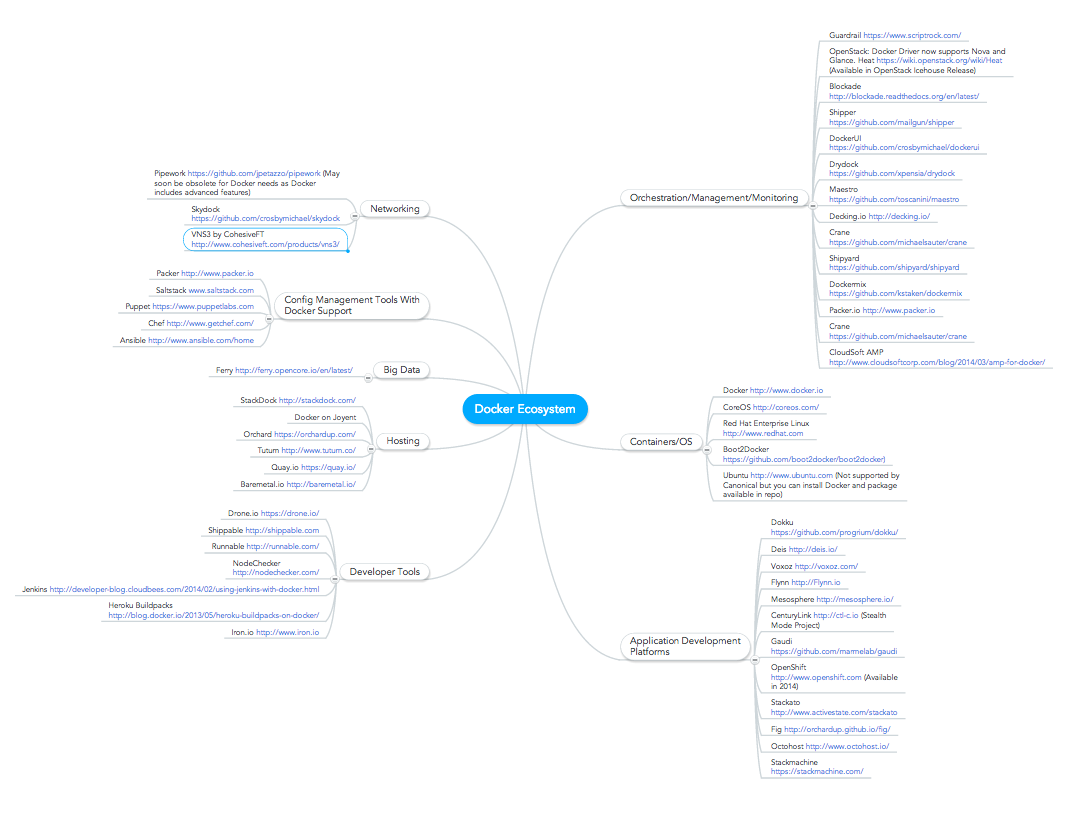Docker revolution and Joyent cool idea
Summary
Docker is making waves and its adoption is viral because it is easy to use and its' portability. Docker is the simplest and most elegant tool for applications deployment invented so far.
However as everyone attempts to make Docker work on all environment possible, there is a new, labyrinthine muddy eco-system which obliterates Docker extraordinary user experience.
User experience is the single most important element of success.
What looks promising is that a reputable player in cloud computing, like Joyent, who declared to create a single place for container deployment and restore the original ease of use Docker's deployments plus unparalleled performance
Why Docker 's viral spread?
My post Docker, a New Business Star from January 2014 anticipated the creation of the new buzz word that is all over the media. The blog article is included on Docker's relevant new and article listed on their web siteHow did Docker become a "zero-to-one" solution? I quote from original post above:
This above was a crowded "one-to-n" with lot of competitionOriginally designed as a platform as a service (PaaS), Docker showed promise for its flexible capabilities in providing developers with a service that supported multiple programming languages. But the competition from companies like Heroku and VMware’s Cloud Foundry made for a challenging market, further exacerbated by the lack of a widespread market acceptance for the benefits that PaaS providers offered.
The brilliant idea they got rid of the Hypervisor. They also made it easy to use, which is hugeBut developers did need a way to move their code to cloud services in a lightweight way without the tax of heavy virtual machines that were difficult to move and required a degree of manual integration. The problem stemmed from the virtualization technology itself, which sits below the operating system. It virtualizes the server, not the app. And because of that, the operating system has to move in order to run the app wherever it might be transported. Once delivered, it has to be booted up and configured to run with the database and the rest of the stack that it depends on.With Docker, the container sits on top of the operating system. The only thing that moves is the code. The developer does not have to boot and config. Instead, the container syncs with the cloud service.
The Docker ecosystem
Now that everyone wants to use Docker, we have an entire, mind-blogging eco-system
 |
| Click on http://www.mindmeister.com/389671722/docker-ecosystem |
Translating complexity for 95% of the users
I am fortunate to work and learn from some of the best high performance engineers around. I asked them y to look at this demo. They are hard to please. They detect immediately what is so-and so.
I pointed them this demo on you tube, Docker Clustering on Mesos with Marathon I am not embedding it here as takes 40 minutes to watch. The demo is 80% command line writing. The audience was as delighted as a music connoisseur listen to a piano concerto by Arthur Rubinstein.
I think I understood part of the demo, by my expert friends were delighted:.
"that's bloody amazing! I knew Mesos worked, I had no idea it could be done that easily. If I was going to deploy Docker in a production environment, that's how I'd do it."
"though running docker with mesos is nice. Google is pushing their own solution: https://cloud.google.com/container-engine/ which uses the open source Kubernetes: https://github.com/GoogleCloudPlatform/kubernetes Anyways, good looking proof of concept"
Joyent
Joyent is one of the nicest cloud company I know. I always admired them. Many great people left the company. Other good people joined the company. CTO Bryan Cantrill comes from Sun Micro where he was a star distinguished engineer.
Joyent supported for many years its own implementation of a containers on its cloud service but reading from this source on December 3, 2014:
Joyent CTO Bryan Cantrill says that with Docker containers emerging as a de facto standard, Joyent sees a significant opportunity to not only host application development projects based on Docker containers, but also on actual production applications.
Rather than relying on hypervisors that introduce both additional compute overhead and network virtualization complexity, Cantrill says Joyent is betting that developers that build applications using Docker containers would much rather attain higher levels of performance using bare-metal servers rather than relying on hypervisors to access virtual machines.
What Joyent says tacitly is this: "Ok guys, true, you can run Docker anywhere, but if you run them on Joyent cloud you get a performance and security that you don't get anywhere else on the planet, because we are unique."
If this message gets across, Joyent will want new users who never before used Docker and Joyent together. Who are those users, apart from elite developers? How can they be wow-ed? What should a user do after staring the beautiful home page? How they can be addicted to Joyent's container solutions? What exactly should a user do, step by step to get hooked first time? How we discover when users feel pleasure using Joyent solution? User sentiment is very important
There is a great opportunity for Joyent to create a new monopoly, based on innovation, a good monopoly as Peter Thiel says.
Peter Theil is one of the two seed stage investors in Joyent. And on October 31, they got a series E investment of $15M showing the confidence the investors have in their new focus on containers.

Comments